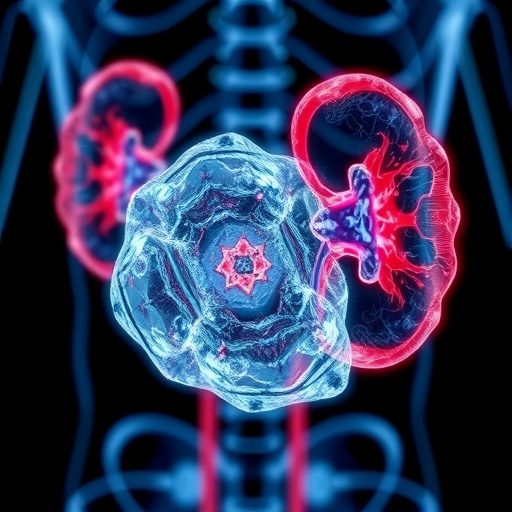
Credit: UNIST
A recent study, affiliated with UNIST has engineered a self-sustaining sensor platform to continuously monitor the surrounding environment without having an external power source.
This research has been led by the team of Professor Jaehyouk Choi of Electrical and Computer Engineering at UNIST in collaboration with Professor Wonjoon Choi of Mechanical Engineering at Korea University. The findings, published in the March issue of the prestigious journal, Nano Energy note that the proposed platform is expected to contribute to advanced sensing functions of a self-sustaining system for various targeted-ambient elements.
In the study the research team presented a self-sustaining water-motion-sensing (SS-WMS) platform to monitor and display the time-varying dynamics of water-motion, such as frequency and amplitude, using only the energy harvested from the water-motion itself.
A self-sustaining sensor platform is a core component for Internet-of-Things (IoTs) and smart-grid systems. The existing sensor platforms require energy to operate and display the detected information. Therefore, monitoring, processing, and displaying the minute changes of a targeted-environmental element in a real-time fashion without the use of external power sources or energy storages, like batteries has been challenging.
The research team solved this problem with the use of energy harvesting, an essential technology for permanent sensor platforms. Energy harvesting, also known as energy scavenging, is a technology for the harvesting of energy from various sources in the ambient environment, such as wind, water, light, heat, and mechanical energy for conversion into convebient use electric energy.
"It is virtually impossible to manually power a large number of sensors or periodically replace the batteries," says Professor Choi at UNIST. "The newly-developed semiconductor circuit is capable of performing multiple functions simultaneously, which include energy harvesting and analysis of dynamics."
The proposed sensor platform consists of a water-contact-based triboelectric nanogenerator (WC-TENG), a self-sustaining water-motion sensor integrated circuit (SS-WMS IC) on a test printed circuit board (PCB), and an LED array for displaying the detected frequencies and amplitudes of water motion.
The circuits that store the harvested electrical energy and simultaneously analyze the signals are made using CMOS (Complementary Metal-Oxide Semiconductor) process. CMOS is an economically feasible method used in the production of semiconductors, as well as analog and digital circuits. It is composed of P-type and N-type transistors and can be designed as circuits that process various signals. Moreover, due to the low cost of manufacturing, it is also advantageous for commercialization.
In this study, Professor Choi's team designed the SS-WMS IC based on standard 65-nm CMOS technology, so that one CMOS semiconductor chip about the size of a grand of sand to perform multiple functions simultaneously.
According to the research team, their newly-developed SS-WMS platform has overcome the intrinsic limitations of prior self-sustaining sensors by improving the reliability and the continuity of real-time operation and delivering more useful and sophisticated information of the targeted ambient elements.
It is also capable of conducting energy generation and harvesting, capacitor charging, water motion analysis, as well as LED control for displaying sensed information without hampering the mobility of sensors or demanding significant efforts and costs for follow-up management, respectively
Moreover, because the integrated one-platform concept requires no external power source and significanly reduces energy storage requirements, it can be applied to wireless or no-power sensor platform and grid-scale renewable energy plants, the research team notes.
Professor Choi notes, "This newly-developed sensor platform is a low-power device that is operated solely by the energy harvested from the water-motion itself." He adds, "It can be used as an environmental sensor platform for continuous monitoring of the flows of water or currents, the total amount of rainfall per hour, as well as a leak or accidental spill of hazardous waste at industrial sites."
"The entire platform operation can be powered solely by the harvested energy from the WC-TENG," says Professor Choi. "We expect this platform can contribute to the development of new types of self-sustaining sensing platforms for liquids, such as seawater and wave dynamics, rainfall tracking, and permanent liquid-leakage monitoring systems."
###
This work has been supported by the Basic Science Research Programs through the National Research Foundation of Korea (NRF), funded by the Ministry of Education and the Ministry of Science, ICT & Future Planning.
Journal Reference
Dongjoon Shin,Taeho Seong, Jaehyouk Choi, and Wonjoon Choia, "Self-sustaining water-motion sensor platform for continuous monitoring of frequency and amplitude dynamics," Nano Energy, (2017).
Media Contact
JooHyeon Heo
[email protected]
82-522-171-223
############
Story Source: Materials provided by Scienmag




